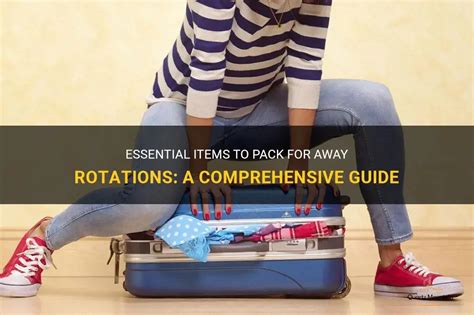USC’s away rotations provide medical students with invaluable opportunities to expand their clinical skills, explore different specialties, and connect with renowned healthcare professionals. This comprehensive guide will delve into every aspect of USC’s away rotations, empowering medical students to make informed decisions and maximize their experiences.

Overview of USC Away Rotations
USC offers a robust away rotation program, with over 200 affiliate programs across the nation. These rotations are typically four weeks long and can be scheduled during the third or fourth year of medical school. Students are responsible for applying to and securing their own away rotations, with the support of the USC Office of Medical Education.
Benefits of Away Rotations
1. Enhance Clinical Skills:
Away rotations expose students to a wider range of patient populations, disease presentations, and treatment modalities, fostering their clinical competence and preparing them for residency.
2. Explore Medical Specialties:
Students can explore specialties that may not be available at their home institution, helping them identify their preferred career paths and make informed decisions about residency applications.
3. Network with Healthcare Professionals:
Away rotations provide opportunities to establish relationships with physicians and other healthcare professionals, expanding students’ professional networks and gaining valuable mentorship.
4. Enhance Residency Applications:
Strong away rotation experiences can significantly enhance residency applications, demonstrating a student’s dedication to their field, willingness to step outside their comfort zone, and ability to adapt to different clinical settings.
Application Process
The application process for away rotations typically involves the following steps:
1. Research and Identification:
Students should begin researching potential away rotations early on, considering their career interests, desired locations, and affiliated institutions.
2. Contacting Programs:
Students should reach out to the coordinators of their desired programs, expressing their interest and inquiring about application requirements.
3. Submitting Applications:
Applications generally consist of an online form, a personal statement, a CV, and letters of recommendation. Deadlines vary by program, so it’s essential to check with individual institutions.
4. Interview Process:
Some programs may conduct interviews to assess a student’s fit for their rotation.
Financial Considerations
Away rotations can involve significant expenses, including travel, accommodation, and potential fees. Students should budget accordingly and explore financial aid options such as scholarships or grants.
Tips for Success
1. Plan Early:
Start researching and applying for away rotations well in advance to secure the best opportunities.
2. Tailor Applications:
Customize your application to each program, highlighting your interest in their specialty and how the rotation aligns with your career goals.
3. Obtain Strong Letters of Recommendation:
Request letters from individuals who can attest to your clinical skills, work ethic, and professional demeanor.
4. Explore Different Specialties:
Consider exploring specialties you may not have considered previously, as it can provide valuable insights and broaden your perspective.
5. Embrace the Experience:
Make the most of your away rotations by engaging with patients, observing procedures, and actively seeking feedback from preceptors.
Frequently Asked Questions (FAQs)
1. How do I choose the right away rotations for me?
Consider your career interests, desired locations, and affiliate institutions. Research different programs and contact coordinators for more information.
2. How many away rotations should I apply for?
Aim for a range of 8-12 applications to increase your chances of securing your preferred rotations.
3. What is the typical cost of an away rotation?
Expenses can vary depending on location and duration, but typically range from $2,000 to $5,000.
4. Are there any financial aid options available for away rotations?
Explore scholarships, grants, and financial assistance programs offered by USC or external organizations.
5. Do away rotations affect my residency applications?
Strong away rotation experiences can significantly enhance residency applications, demonstrating your dedication, clinical competence, and ability to thrive in different settings.
6. How can I use my away rotations to explore my career options?
Immerse yourself in different specialties, interact with physicians, and reflect on your experiences to gain insights into your potential career paths.
Conclusion
USC away rotations offer medical students an exceptional opportunity to enhance their clinical skills, explore medical specialties, and connect with healthcare professionals. By carefully planning and executing your away rotation experiences, you can maximize your learning, expand your horizons, and take a significant step towards your future career aspirations.
